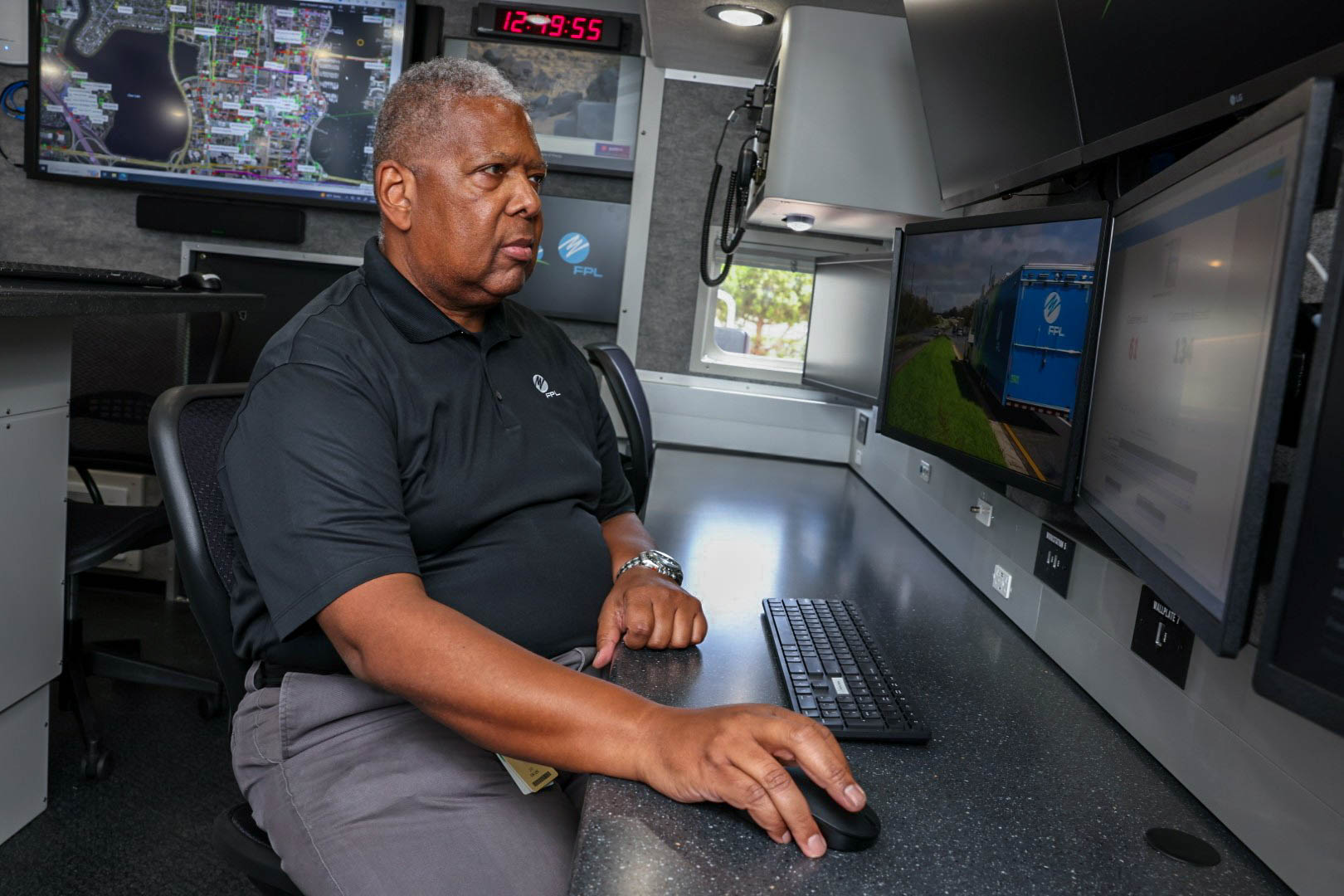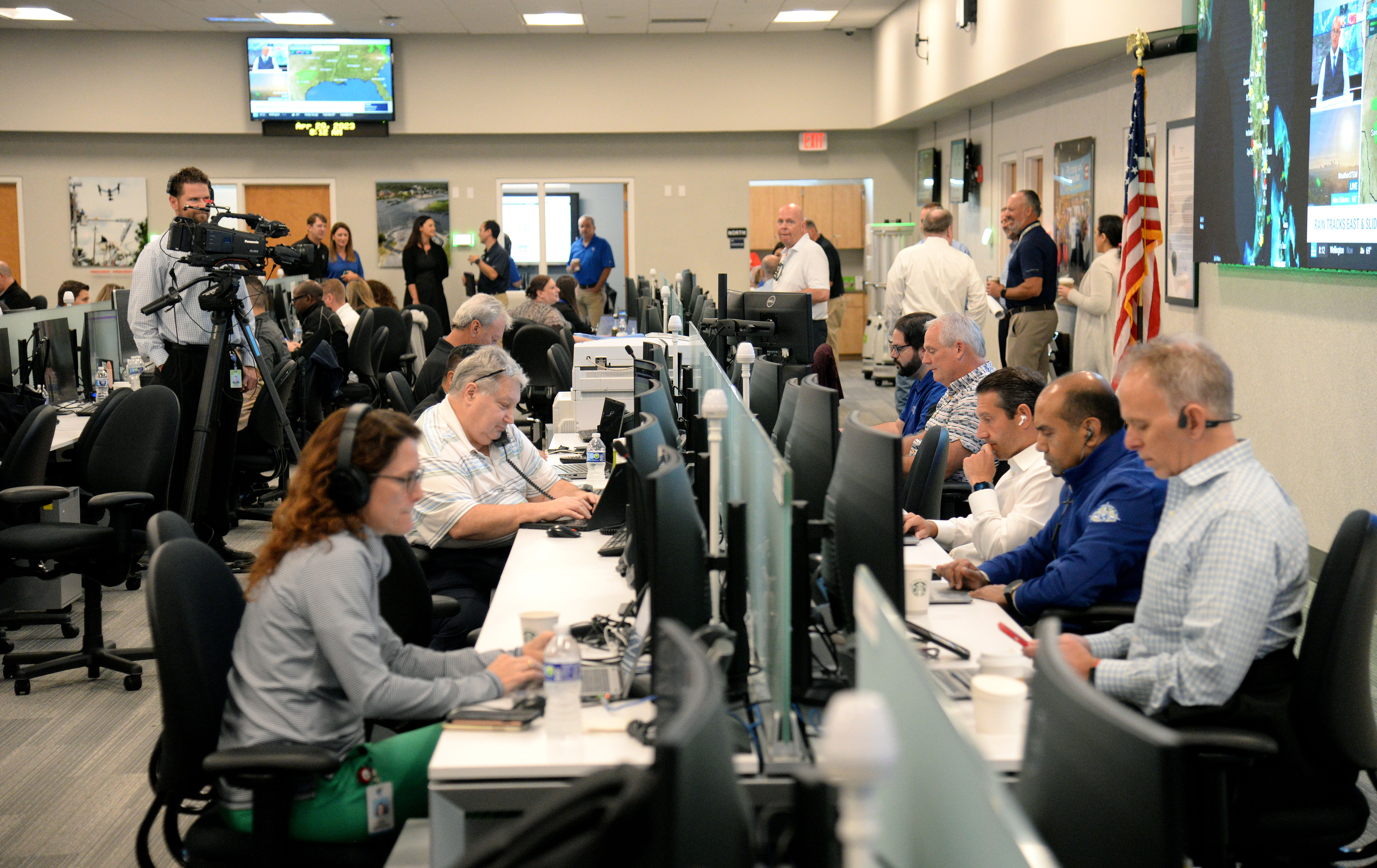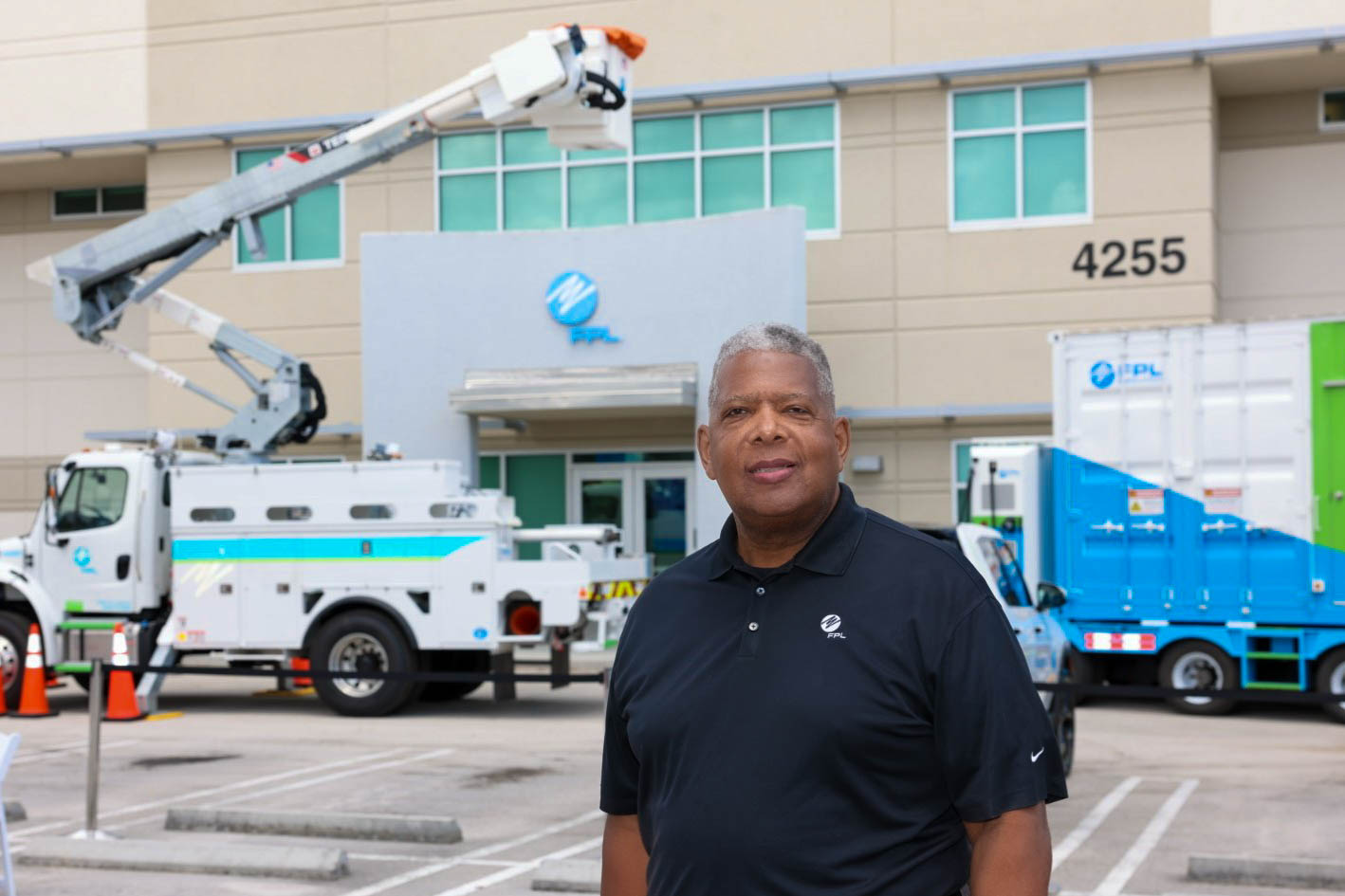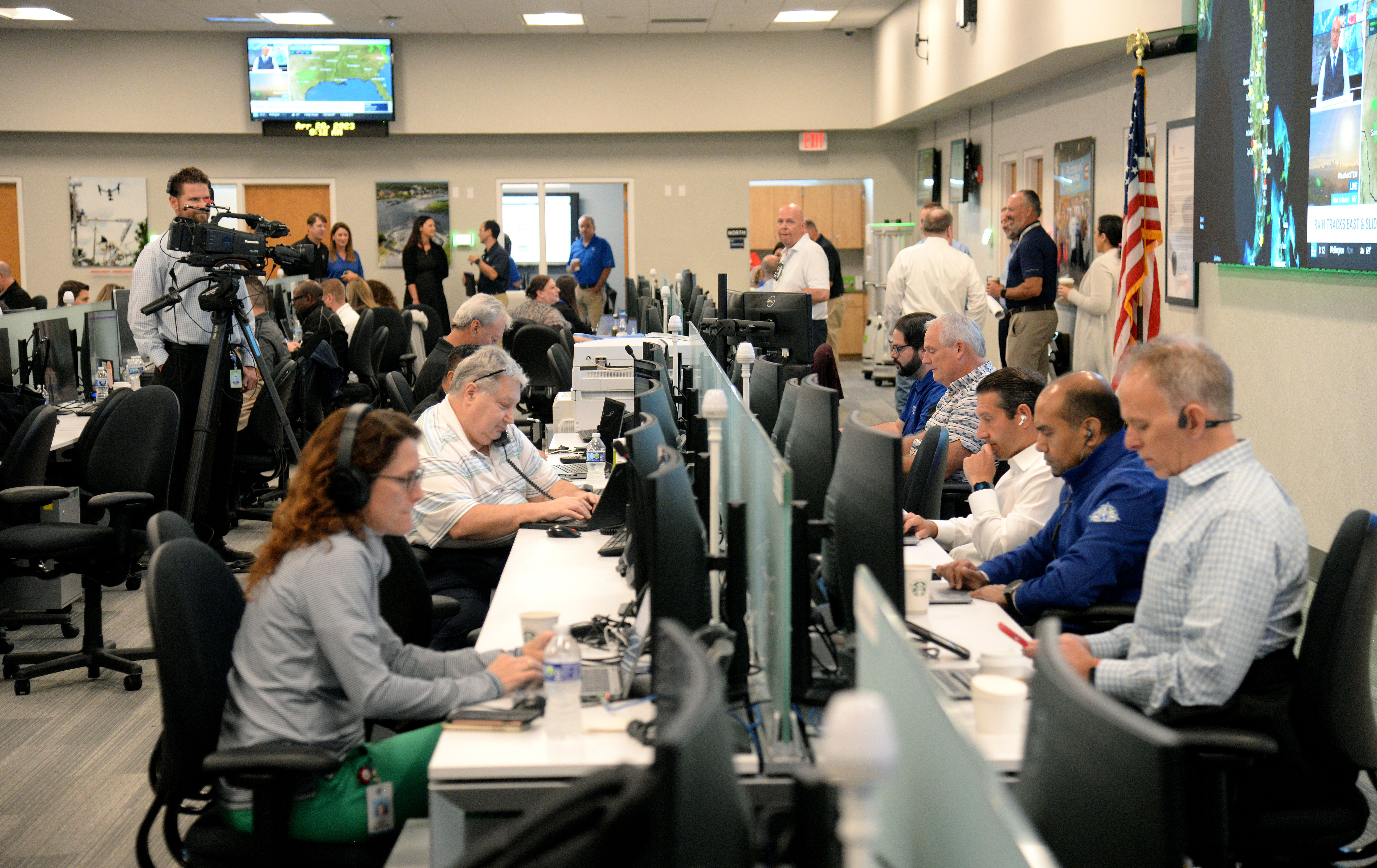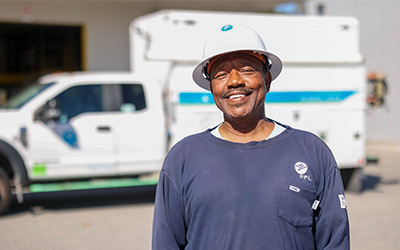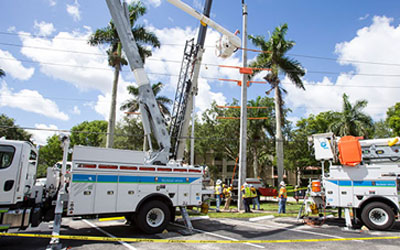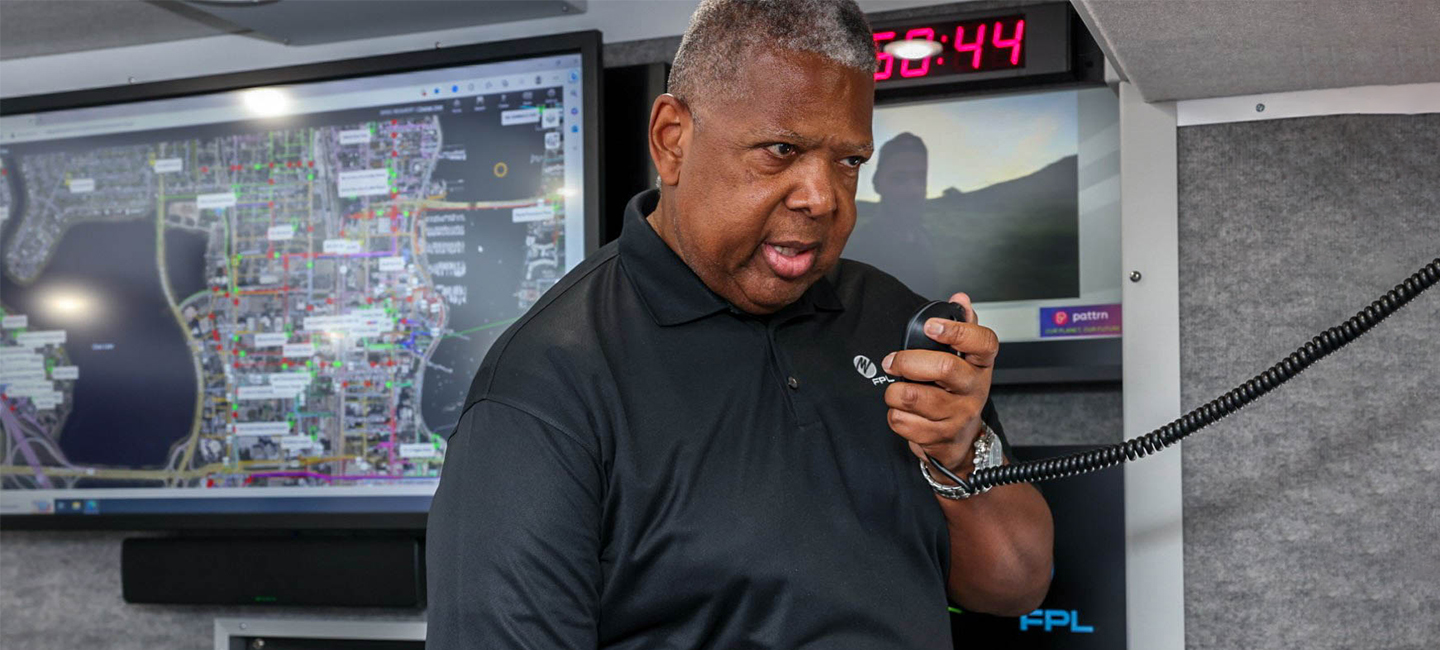
As Hurricane Andrew ravaged South Florida in August 1992, one electrical engineer found himself at the epicenter of that historic, catastrophic, Category 5 storm. It was the first time Jarvis Swain, a Georgia native, experienced a hurricane of that magnitude and little did he know it would change his life forever.
“Andrew was unprecedented and it left a lasting impression,” Swain, a principal engineer for Florida Power & Light Company’s power distribution unit, said. “It taught me to never underestimate the power of Mother Nature and although I didn’t know it then, it wouldn’t be the last time I’d see the power of a catastrophic hurricane.”
In the past, Swain’s storm role was to patrol main power lines. He’d drive along the power lines route looking for damage and pinpointing anything that may cause an outage. Then, he’d report it to the storm command center, which would assign a lineworker crew to fix it.
.jpg)
Three decades later, he patrols main power lines electronically from the comfort of his desk. A system of smart switches installed on FPL’s grid detects potential outages before they even happen, and a fleet of drones monitor FPL’s 88,000 miles of power lines.
In his current FPL role, Swain helps leaders improve the utility’s power grid, making it more resilient in preparation of future disasters by providing comprehensive reports about where outages happen and where the company needs to focus its efforts.
In his 41 years of service at the company, Swain has experienced firsthand the effects hurricanes can have on an electric power grid.
“We had three hurricanes affecting FPL’s service territory in six weeks in 2004 and nearly every corner of the state felt the impacts. We were back-to-back from August to October with nothing but a week of rest here and there,” he said. “The following year, we had Wilma, a 3-week storm, which is unheard of. If anything, these hurricanes pushed us to ensure the grid’s reliability and safe operation during daily operations as well as extreme weather conditions.”
After the historic 2004-2005 hurricane seasons, when seven storms hit the state of Florida, FPL began the journey of improving its day-to-day reliability by hardening main power lines and installing more than 200,000 intelligent devices that can detect and prevent power outages.
“If we have better day-to-day performance, it means we have to spend less time on restoration once a storm hits,” Swain said.
Every year, FPL prepares for the upcoming hurricane season with a company-wide storm drill designed to test the company’s response to a simulated hurricane. The weeklong drill is an important part of the utility’s year-round training ensuring employees are ready to respond when customers need them most.
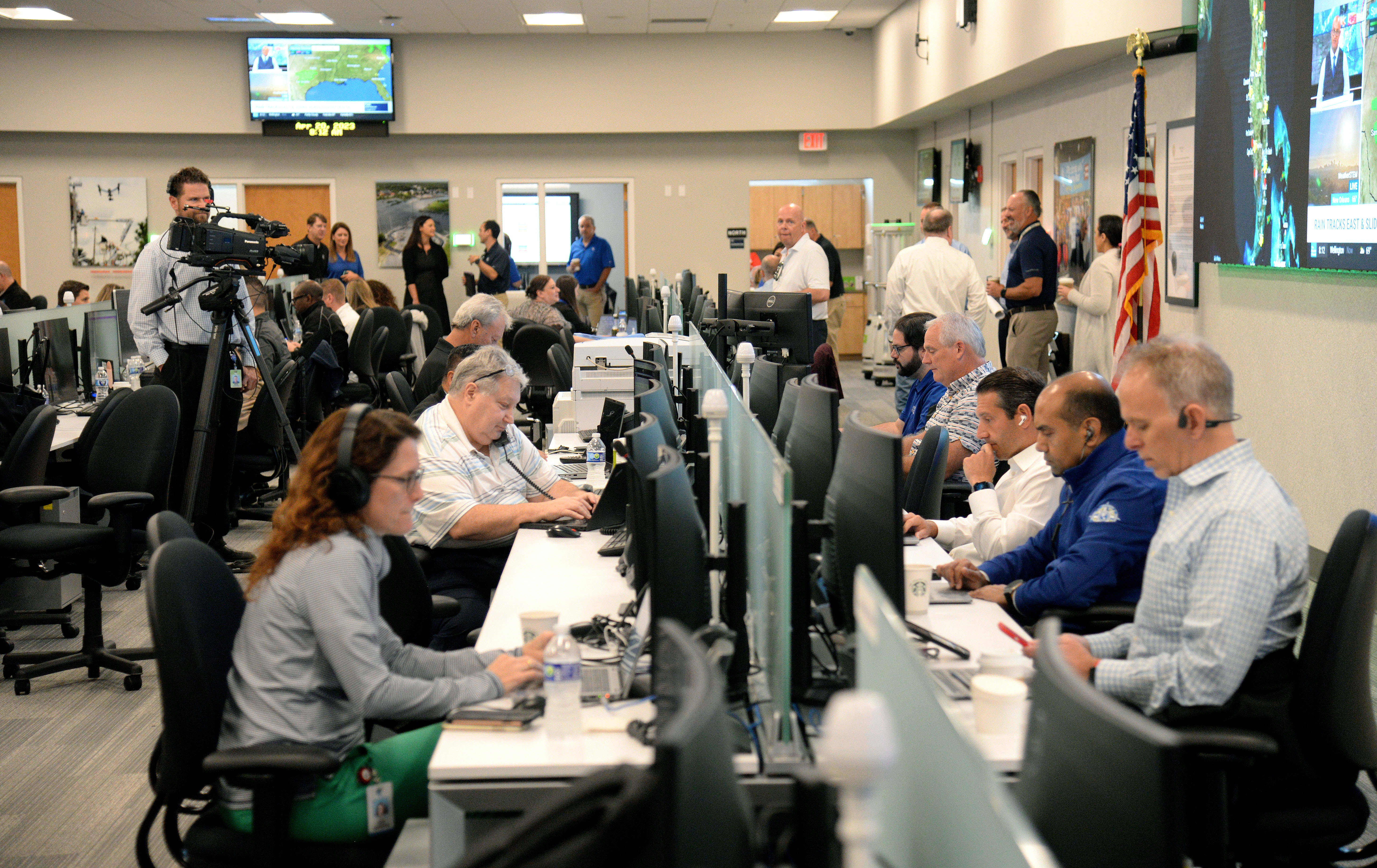
Like many of the more than 3,500 employees participating in the drill, Swain has a day job as well as a storm job. During hurricanes, he’s part of the Storm Situation Unit where he provides leaders the data and analysis they need to make critical decisions, such as pinpointing strategic locations for staging sites as well as where to deploy restoration crews, resources and staffing.
“Jarvis and I joined FPL the same year and it’s been a pleasure working with him ever since. He has played a critical role in the success of our power delivery team, helping us provide customers with the most reliable service in the country,” Manny Miranda, FPL Executive Vice President of Power Delivery, said. “His dedication, passion and commitment embody the values of our organization.”
Identifying and responding to the areas most affected by the storm is not only crucial for FPL and its customers, but also for county and state leaders or agencies making contingency plans to minimize disruptions and ensure public safety.
“We help them see the big picture,” Swain said. “One of the things Manny (Miranda) likes to see is our 10-year comparisons showing how FPL’s reliability has progressed. The reports show we’re doing better than before.”
Miranda and his team lead the company’s hurricane restoration efforts. Since 2006, the hardening investments implemented by the Power Delivery team has improved day-to-day reliability by 41%.
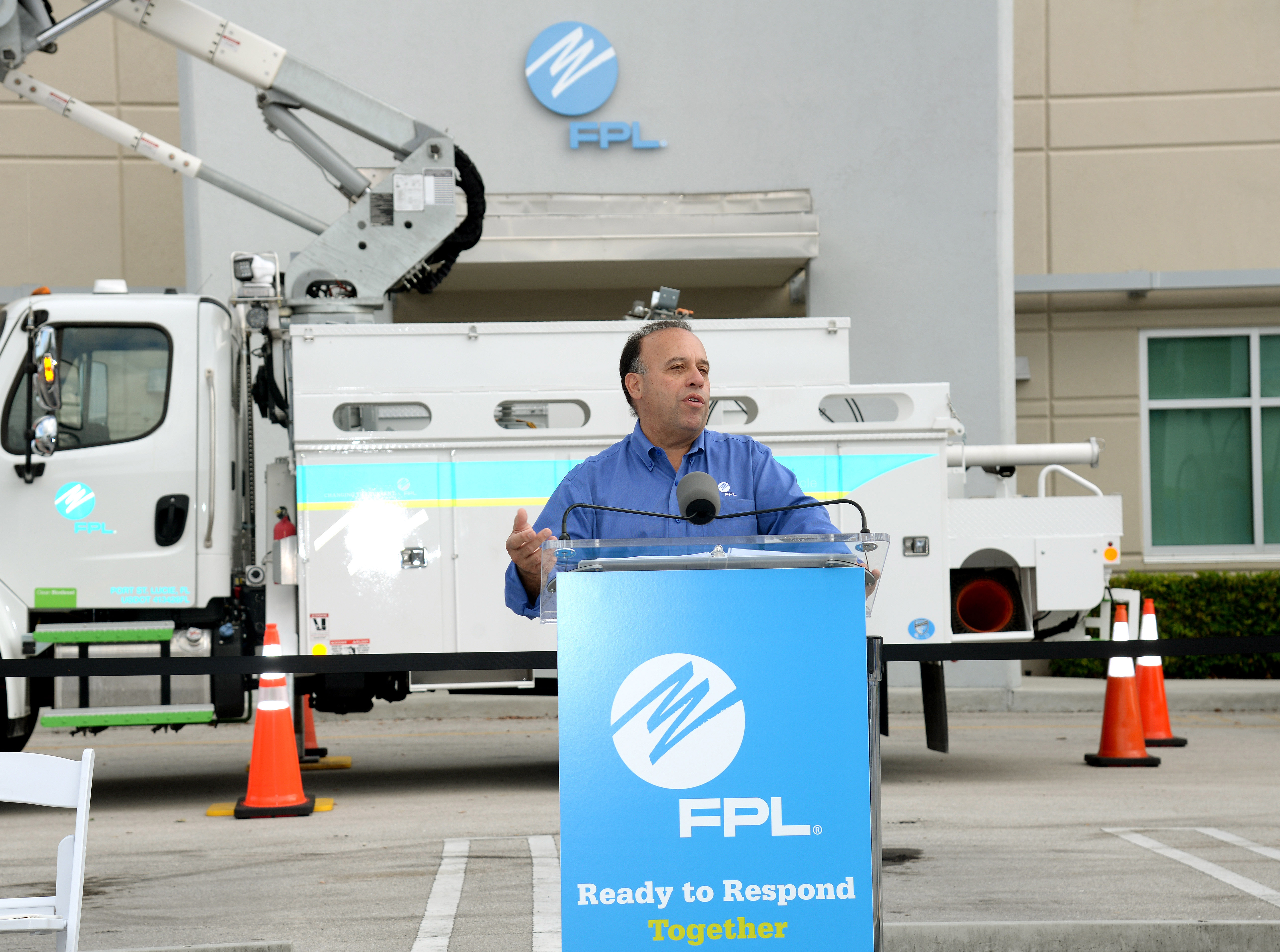
“In Florida, it’s not a matter of if, it’s a matter of when a storm will hit,” Miranda reminded FPL employees and invited guests during this year’s storm drill. “Although we’ve gotten much better over the last 20 years, no system is stormproof. Hurricanes will always result in outages, but that’s why we have our storm drill and why we’re always working to improve how we prepare and respond.”
At 63-years-old and with dozens of storms under his belt, Swain doesn’t plan on stopping yet. He loves the people he works with, and his job gives him purpose.
“There are great people behind FPL. Committed people. They work hard and long hours to get your power restored,” Swain said. “It’s more than a company you pay to have power every month and that’s why we say every day we don’t have a hurricane, is a day we prepare for one.”
